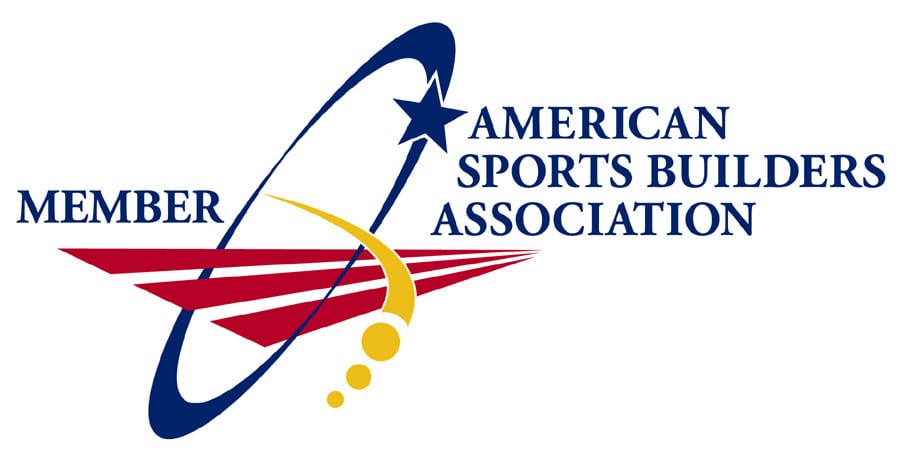
Rooftop Revolution - Real-Estate Is At A Premium And Rooftop Construction Is On The Rise
Read Video Transcript and Main Points Addressed Below
In the introduction, we kind of touched on some of the markets that we’re currently active in and rooftops is a big one for us so let’s talk about rooftop installations right now. You know, throughout the country and throughout the world as we said, you know, real estate and space is at a premium. A lot of guys have resorted to building up. They’re taking advantage of rooftop areas and it’s really amazing to me. We’ve done hundreds of putting greens on rooftops throughout the many years that we’ve had our panels. We’re seeing bigger projects happening, larger landscaping applications, for example, we just finished a very nice project with one of our dealers at the Denver Airport.
They took a 30,000 plus square foot area and turned it into a common space for travelers to come in and hang out. They could play bocce ball, they can read, but it’s all a really pretty area. So you’re taking what is oftentimes an ugly asphalt or a concrete roof and we’re greening it up and we’re making an artificial or synthetic green roof.
How To Get Started With Building on Rooftops
So how do you do that? Well, you run into a couple obstacles sometimes. In many cases we can … or the contractor or the architect will say we can build directly on top of the existing roof system. It might be tar and gravel, it could be concrete, it could be a rubber membrane and our panels allow us to do all of that. Here’s why. Think about the load capacity of the roof. I’ve seen, and this is hard to believe, but I have seen companies have moved tonnage and stone to a rooftop in preparation of building a synthetic turf area and I have seen rooftops collapse. I have seen upper levels of a garage and the flat roof collapse. The thing about all of our panels, in the worst case scenario it weighs only a pound or two a square foot. That’s less than a cat. So you’ve got the fact is that the panel is not going to be an issue for architects. In fact, architects love this product for rooftops and that’s one of the big reasons.
Dealing With Permeability and Drainage
The other is drainage. The way the panels are designed, you know, they drain vertically and they drain horizontally so here’s an example of a rooftop panel and again, this is our Champion panel. You’ll see here that you’ve got an enormous amount of drainage through the top surface and you’ve got the panels that have a cell structure to actually hold water which is great that it can store water but also run out laterally. Where is it going to run to? Well, the engineers were smart. They’ve already designed the roof to allow that water to go somewhere. It’s going to go into existing scuppers or off to the perimeter.
So our system allows the water to run through the turf or because we’re now a court system and floor system can run through the panel and down to the roof member and then go out to an awaiting drainage area. On our Champion, our Pro panels, you’ve got the advantage of course of the turf barbs. That’s huge because now you can go in there with maybe a limited amount of infill and allow that turf to really lock onto these panels and not slide. It just makes such sense to build on top of a roof with the UltraBaseSystems panels just because of the ease with which you can do it.
Dealing With Fire and Other Safety Regulations
Now, as we got further into this, customers were saying, “Okay, this is great but have you ever considered making it flame retardant?” Now, our day to day material really doesn’t meet these really strict rooftop standards. So we got with our polymer people and probably took almost a year or so to develop this and a lot of very, very expensive testing to achieve this standard which we have all documented on our website and that’s available for you guys to download. But this is the blend and we made it white for a reason, just to make it a different color so it’s not confused with our regular panel.
This is a product that has met what’s called ASTM E-108. This is a Class A and this allows us to build this on top of a noncombustible roof deck system. You take this panel and if you happen to have a turf, if your turf provider can provide you with an ASTM E-108 turf, you have got an amazing system that architects love because now you’re putting that protection onto the roof with your turf and our panel. So we’re very excited by this. We’ve really actually just launched it, probably only about three or four months ago and we’ve already done some very big projects. I mentioned the Denver Airport and a lot of other projects going out there now.
This has been a great advancement for us. Now, how do you build them? How do you build a rooftop installation? There’s a couple of different ways. We have, like I said, you can build directly on top of the existing roof membrane. We put down a geofabric first. We’re obviously big fans of what we call geosynthetic stabilization fabrics. We put that down first to act as a protective barrier between especially a rubber membrane. Now, if you’re doing it on a concrete roof, don’t worry about it. You can go right on the concrete. So that’s a very easy way to work just to protect the rubber membrane, the panel, the turf, and you’re off to the races.
Creating a Completly Elevated Base System Using Pedestals
But if you’re going to need to go up high because maybe you have electric conduit or you’ve got some plumbing fixtures or you could have a pitch of the roof that’s just really bad and you want to try to level it out, that’s when guys are getting involved in the world of pedestals. There’s a lot of companies out there that sell the pedestals. Actually, a pedestal is a device that you can adjust it up or down and level, if you will, a quadrant and from there you can put our panels on top. Now, here’s the thing. Some of our panels are really better suited for pedestals than others.
Our Tour Links IC panel which we also call Ultra Base Extreme is a two-inch panel and it is very, very rigid when you interlock them together because it’s two-inch thick panel. That means we can use less pedestals, basically one in each corner and one in the middle, so actually theoretically three pedestals. But when you start getting involved into the UltraBase panels, you’re going to need more pedestals because they were really never designed to be able to be suspended in space. They’re all meant to be on the ground. So you would have to put more pedestals, one in each corner, and then one on each seam and then one in the middle. That’s a lot of pedestals unless you start getting smart about it.
This is what we’re playing with right now where you begin to take maybe like an aluminum stringer system that we’re actually working on right now that can go from pedestal to pedestal and actually almost becomes like a grid system for the pedestals to rest on. We’re in the development of that right now and looking at it. As we all know, nothing’s inexpensive right now. It’s a system that we’re working on seeing how we can get the best value but the thing we know is that it works. So if you’ve got a need to go onto a rooftop and you’re trying to elevate the surface area then this is a great way to go with a pedestal by itself or in combination with a truss system that we’re creating.
The panels are perfect for that type of installation because they drain like a sieve and basically all the water just drops through. So the idea of holding water on a roof is really something that’s not going to happen. You know, my job here as the owner of this company is to always look at opportunities. To be honest with you, that’s the best part of my job. I mean, I love the innovation side of it. It’s my background. I love looking at markets that maybe others haven’t or ignored and saying, “Well, what if? Or how can we do it?” That’s what we’re specializing in. So if you’ve not looked at rooftop work yet or you’ve had them come to you and you’ve passed it by because you didn’t know how to do it, stop.
We have a solution for you. I tell people this and we really don’t mean this to sound like a complete egomaniac but we’ve probably already done it. We’ve not … very rarely do we get calls of people throwing things out to us to say, “Have you ever built over this?” Yep. “Have you ever built in this type of climate?” Yep. So I got a great team here with Scott Ford and myself and my sales team to help you go through these technical questions. I think you’re going to be surprised what you can do. It really goes back to what I said about our line, no limitations. No limitations. There should be no place that we can’t install. So rooftops now, put it on your checklist of things you can do and we share with you exactly how to do it.








